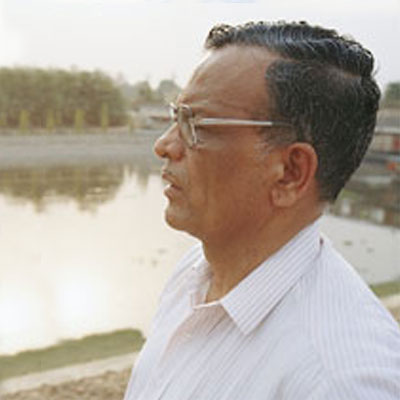heading
1993: Madhav Atmaram Chitale, India
Dr. Madhav Atmaram Chitale has played a major role in getting India’s decision makers and strategic planners to think of water as a resource whose quality and availability need to be safeguarded.

Moreover, he has increased public awareness, above all in the 1980s when he introduced an annual, nationwide Water Resources Day. A different theme is chosen for the day each year. These information campaigns have influenced neighbouring countries in South Asia.
But Chitale was already hard at work back in the 1960s. He was frequently to be found in various parts of the country, and his family always went along and lived out in the field with him. In 1961 the dams at Panshet and Khadakwasala collapsed, leaving the people of the nearby city of Pune without water. Dr. Chitale energetically participated in the efforts to restore the water supply in a short space of time, an achievement that earned him considerable renown.
In the mid-1960s a World Bank project was planned to supply the giant city of Bombay with drinking water, carrying it 60 kilometres from a reservoir in closed pipelines. Chitale managed to get the plan changed to involve irrigation canals, and a hydropower station and under-stream tunnels. When the scheme was completed, two billion litres of water could be pumped to Bombay every day, and people and farms over an area of 250 square kilometres between the reservoir and the city gained access to drinking water and irrigation, and the turbines provide cheap electricity.
The Yamuna, for instance, a major tributary of the Ganges, has been redirected by human labour into a branching system of artificial channels, which, down to their finest capillaries, irrigate verdant cropland to the east of the capital New Delhi.
“My view has always been that development projects as big as this should be as fully integrated as possible with other development opportunities.These pictures symbolize the richness of water and the way water needs to be managed.For Hindus, the river is a mother. Without water, there is no life. ”
Dr. Chitale has been rewarded in various ways for his efforts. In 1989 he was appointed to the highest post an engineer can hold in Indian central government, that of Secretary at the Ministry of Water Resources. 1990 saw the creation of a new government body, the National Water Board, and Chitale was one of the prime movers behind both this agency and the national water strategy it was set up to implement.
He was also one of the originators of a mammoth project to improve the water of the Ganges, the Ganga Action Plan (GAP). This was developed into a nationwide programme covering several rivers. In January 1993 he was appointed Secretary-General of the International Commission on Irrigation and Drainage (ICID), an India-based international organisation for improving the effectiveness of irrigation and drainage systems, and for mitigating floods.
He was involved in the development of the world water council and the global water partnership. In South Asia he promoted local and national water partnerships. A thirty year perspective of water development was prepared/ published by the Maharashtra state’s water and irrigation commission under his chairmanship. He is currently busy with the nurturing of voluntary networks in water management.
In parallel with Madhav Chitale’s technical and administrative skills, there is a spiritual communion between him and water. Chitale is a devout Hindu, and the importance of water permeates the whole of Hinduism. Paintings in Hindu temples often portray the god Shiva arresting water through his long hairs on the head, and the goddess of wealth – Laxmi – sitting on a huge lotus flower in a lake.